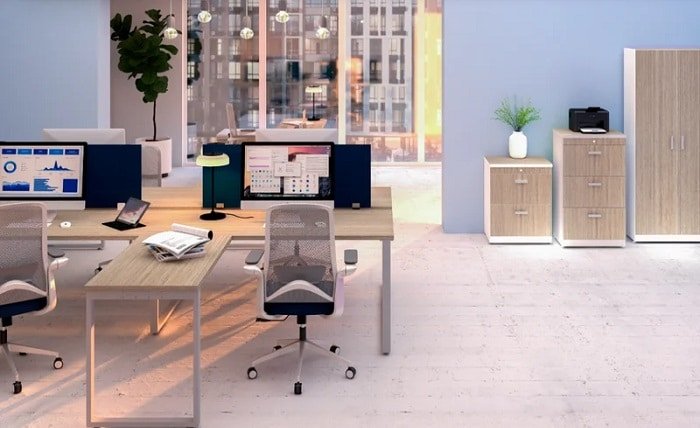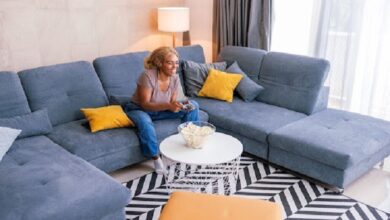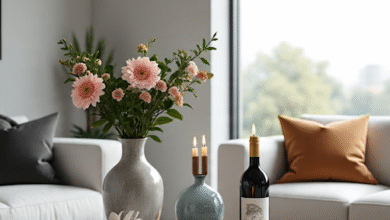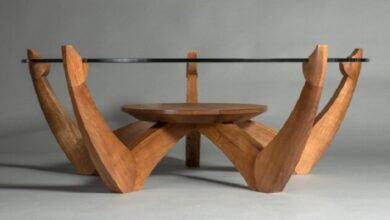The Evolution of Office Furniture: From Cubicles to Creative Hubs

Walk into any modern office today, and you’re more likely to find an open floor plan, collaborative breakout areas, and ergonomic furniture than the boxy cubicles that once dominated the workplace. The journey of office furniture over the past few decades reflects not only changes in aesthetics but a deeper shift in how businesses value their employees, productivity, and creativity.
At RC Willey, one of the leading names in home and office furnishings, this evolution is more than just a trend—it’s a testament to how our environments shape our work lives.
The Rise of the Cubicle: Efficiency Meets Isolation
The cubicle was born in the 1960s, introduced by Herman Miller’s designer Robert Propst as part of the “Action Office” concept. Ironically, Propst designed it to empower workers by giving them flexibility and autonomy. However, as companies realized that cubicles allowed for more employees to be packed into less space, the idealistic vision was replaced with a more profit-driven approach.
By the 1980s and 1990s, the cubicle had become the poster child for corporate America. Though it offered privacy, it also created a culture of isolation. The gray walls, lack of personalization, and minimal interaction stifled creativity and collaboration.
The 2000s: Breaking Down the Walls
With the rise of tech startups in the early 2000s, the office landscape began to shift. Companies like Google and Facebook introduced open floor plans where transparency and collaboration were prioritized. Office furniture began to reflect these new values—desks were no longer separated by tall dividers but grouped to encourage teamwork. Beanbags, standing desks, and communal tables replaced the rigid geometry of the past.
Ergonomics also became a focal point. The recognition that poor posture and uncomfortable seating could lead to long-term health issues drove the demand for more supportive and adjustable office chairs. Height-adjustable desks became a common sight, as did monitor stands, keyboard trays, and accessories designed to reduce repetitive strain injuries.
The Creative Hub Era: Where Function Meets Inspiration
Today’s offices are being designed as creative hubs—places where innovation thrives and people feel inspired to do their best work. Furniture now plays a dual role: it supports productivity while also contributing to a company’s brand identity and culture.
Modular seating arrangements, writable walls, lounge pods, and acoustic panels are all part of this new design language. Companies are investing in dynamic environments that adapt to different tasks—quiet zones for focused work, collaborative spaces for brainstorming, and informal lounges for spontaneous conversations.
RC Willey has embraced this transformation by curating collections that balance modern design with practical needs. Whether you’re outfitting a small home office or an expansive corporate space, their range reflects the diversity and flexibility required by today’s work environments.
Remote Work and Hybrid Models: Redefining the Office
The COVID-19 pandemic accelerated changes already in motion. As remote work became the norm, employees sought to recreate professional, comfortable environments at home. This led to a boom in demand for office furniture that was both functional and stylish enough to fit into personal living spaces.
Post-pandemic, many organizations have adopted hybrid work models, prompting a reevaluation of office space. Rather than assigned seating, many companies now use hot-desking or shared workspaces. Office furniture has adapted once again—becoming more portable, customizable, and technology-integrated.
Furniture with built-in charging ports, integrated lighting, and video conferencing compatibility is now standard. Moreover, wellness has taken center stage with biophilic designs that incorporate natural elements like wood, plants, and organic shapes.
Sustainability and Smart Design
Another major shift is the focus on sustainability. Companies are increasingly aware of their environmental footprint, and office design is reflecting this consciousness. Recycled materials, locally sourced woods, and furniture designed for longevity are in high demand.
RC Willey has responded by offering eco-conscious options that don’t sacrifice style or function. By investing in durable, sustainable furniture, companies can make a statement about their values while reducing waste and long-term costs.
Smart furniture is also on the rise. From desks that remind you to stand, to chairs that monitor posture, technology is becoming embedded in our office environments. These innovations are not only about convenience—they aim to create healthier, more responsive workplaces.
Personalization and Employee Experience
One of the most defining features of today’s office design is personalization. Businesses now recognize that one size does not fit all. The emphasis is on creating environments that cater to different working styles and individual preferences.
From color-coded work zones to flexible desk setups, personalization enhances comfort and morale. RC Willey helps businesses and individuals find furniture that reflects their unique style, making the office not just a place to work—but a place to thrive.
Looking Ahead: The Future of Office Furniture
As we move further into the digital age, the next frontier of office design will likely include even more integration with AI, virtual reality, and augmented reality. Imagine furniture that changes shape based on your task or office layouts that adapt dynamically depending on the number of people in the space.
While technology will undoubtedly continue to shape the workplace, the human element remains central. Office furniture will need to balance high-tech capabilities with the warmth, comfort, and creativity that foster genuine connection and well-being.
Final Thoughts
The transformation of the office—from isolated cubicles to vibrant creative hubs—has redefined how and where we work. What was once seen as merely utilitarian is now a core component of organizational culture and employee satisfaction.
As this evolution continues, choosing the right furniture becomes more critical than ever. Brands like RC Willey stand at the forefront of this movement, offering thoughtfully designed, innovative solutions that adapt to the changing demands of the modern workplace.
Whether you’re a startup founder designing your first collaborative space or a remote worker carving out a corner of your home, investing in quality office furniture is not just about comfort—it’s about cultivating a space where ideas flourish.




